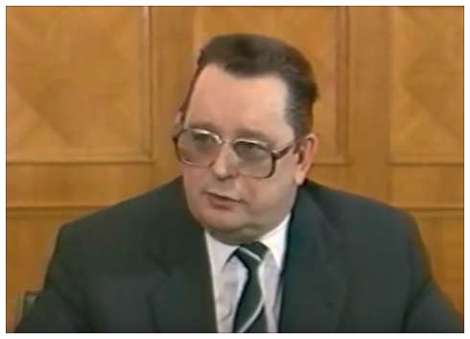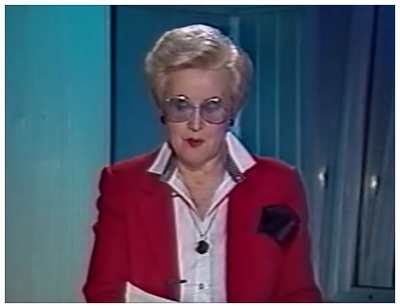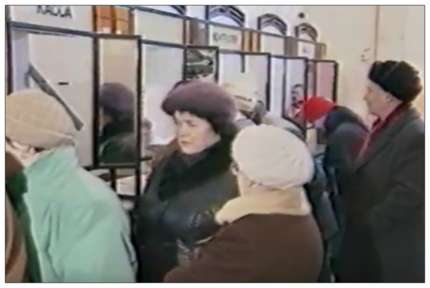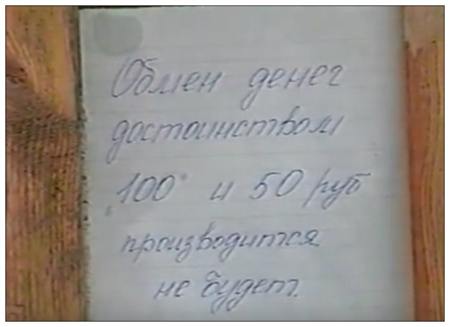Monetary reform of 1991
One of the final blows to the Soviet economy was the Monetary Reform of 1991, carried out by the Prime Minister of the USSR, Valentin Pavlov.
§ Prerequisites
On January 14, 1991, Valentin Pavlov was appointed as the Chairman of the Government of the USSR. Previously serving as the Minister of Finance of the USSR, Pavlov had already been working on various options for withdrawing "excessive money supply."

By 1991, as a result of Soviet cooperatives, a small layer of citizens had accumulated significant amounts of money. At the same time, in conditions of a shortage of goods, when there was not much to spend money on, a considerable amount of money had accumulated in the hands of the population, which was impossible to convert into goods. In other words, salaries were being paid regularly, but the store shelves were empty, and people couldn't always spend their wages..
In an interview with Soviet television, commenting on the need for reform, Valentin Pavlov noted that in his opinion, banknotes with a denomination of 50 and 100 Soviet rubles were the "most important element of the shadow economy" as they facilitated cash flow in opaque sectors of the economy.
At the same time, according to the estimates of the Valentin Pavlov, the denominations of 50 and 100 rubles accounted for "more than a third" of the banknotes in cash circulation. The declared goal of withdrawing cash from circulation is to reduce inflation, as well as a blow to the shadow economy. However, in practice everything turned out differently.
§ Reform
The legal basis for the reform was the decree of the President of the Soviet Union "On discontinuing the acceptance of banknotes of 50 and 100 rubles of the 1961 model of the State Bank of the USSR and limiting the withdrawal of cash from citizens' deposits" on January 22. On the same day, the Cabinet of Ministers of the USSR issued a resolution of the same name aimed at specifying measures to implement the Presidential decree.

The essence of the reform was announced on January 22, 1991, at 9 pm on Soviet television. The main points of reform:
♦ Banknotes of 50 and 100 Soviet Rubles of the 1961 model would no longer be accepted as payment instruments from 0:00 on January 23. In other words, three hours after the announcement, 50 and 100 Soviet Ruble bills were no longer accepted.
The announcement was made at 9 pm, but the circulation of banknotes ended only at 0:00 of the following day, January 23, which gave the most cunning citizens about two hours to perform actions such as transferring money to themselves or buying tickets at railway and air ticket offices. There were also other tricks, like exchanging the money with taxi drivers who were not aware of the decree.
♦ Soviet people were given the opportunity to exchange banknotes of 50 and 100 Soviet Rubles of the 1961 model for banknotes of a smaller denomination of the same 1961 release or for banknotes of the same denomination but of the 1991 release.
The time interval in which it was allowed to exchange money was extremely short and inconvenient (3 working weekdays, from Wednesday to Friday). Naturally, not everyone was able to exchange their savings. Thus, in the stampede at the cherished windows of the savings banks, the Soviet citizens has lost part of their funds which were saved as a reserve. It was possible to exchange 50 and 100 banknotes only at work and only to employees of these enterprises. The exchange process itself was held by special formed commissions. These commissions were to be formed from the very same employees of the enterprise from "representatives of the management, financial and accounting services, trade union committees, councils of labor collectives." A very important limitation was the maximum amount for an exchange - "In this case, the size of the exchange cannot exceed 1000 rubles per worker."2

§ Results and estimations
In addition to complaints related to the practice of bills exchanging, there were questions about the goals of the reform. The Pavlov's reform was designed to remove the surplus money supply from circulation. As a result, 14 billion cash rubles were withdrawn from circulation, but another result of this reform was falling confidence in the Soviet monetary system.

The panic caused by the urgent bills badly affected labor discipline. It is understandable - people were quite rightly worried about the future of their savings and work process faded into the background.
The increasing rate of ruble's emission in 1991 nullified the whole meaning of the reform. In the book "The Fall of the Empire" Yegor Gaidar gived the following data about the money issue in 1991: April - 4.77 billion, May - 5.50 billion, June - 18, 74 billion. 3
Due to the subsequent emission, the Valentin Pavlov's reform did not lead to a decreasing of the money supply.
